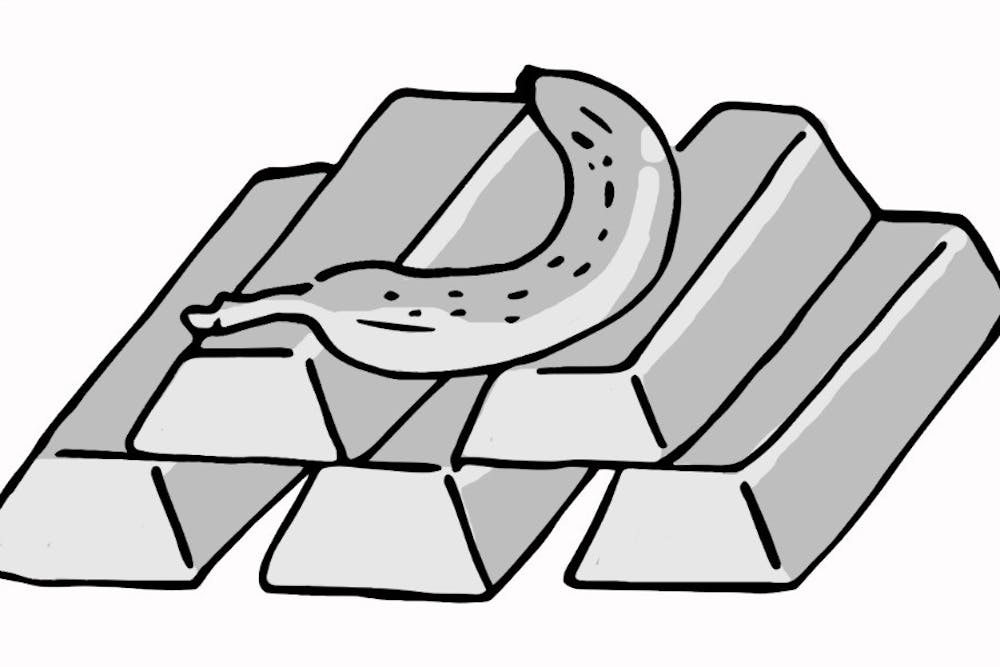By Jack Evans, For The Miami Student
After a long run on a Rec Center treadmill, a Miami student towels himself off and heads through the pro shop to leave, picking up a banana on the way out. He stops at the register and swipes his card.
The banana is $1.29, potentially reduced to 90 cents with the Diplomat meal plan discount. He could buy at least six bananas for the same price at the Kroger down the road.
Even at MacCracken Market, the closest establishment students have to an on-campus grocery store, prices of fresh fruit are well above supermarket pricing. Most of the fresh fruit costs 99 cents a piece. This is over a 100 percent mark up on apples and oranges, which both retail for about 47 cents per fruit, according to U.S. Bureau of Labor Statistics data.
The most drastic inflation, however, comes with banana pricing. At 99 cents per unit, bananas at MacCracken Market are about 550 percent more expensive than their supermarket counterparts, which cost, on average, about 18 cents per banana.
Jon Brubacher, director of Food Purchasing for Miami Dining, said the price hikes have to do with purchasing and sales volume.
"Miami's dining services are self-supporting, which means that we must generate enough income to meet all financial obligations we have," Brubacher said.
The markets' intent is not to compete with local grocery stores, Brubacher said.
"Our markets truly are here as a convenience, and our intent is not to be competitors to a full grocery store," he said. "By utilizing our current supplier model, we are able to offer a wide variety of products across campus that we can procure in similar volumes."
A mitigating factor of this increased cost is the Miami student discount. At markets and à la carte eateries on campus, students with a Diplomat meal plan receive a 30 percent discount. This discount is raised to 50 percent at buffet-style dining halls.
"I know Miami marks up their prices," said senior Rachel Winters, a student manager at MacCracken Market. "But the student discount helps, so you're really only paying 60 cents for a banana, which I think is reasonable."
According to Winters, bananas are by far the most popular fruit.
Enjoy what you're reading?
Signup for our newsletter
"The only time we ever have to throw any out is when they come to us bad," she said.
Winters usually restocks the banana display two to three times during her three-hour shift.
The Rec Center charges the most per banana, $1.29, out of all the campus dining locations and markets. The Rec keeps its bananas in a metal bowl by the checkout and usually sells between 20 and 25 a day and throws away two or three. Day-old but not yet spoiled bananas get marked down for 50 percent off.
Sophomore Andrew Crawford, a customer service rep at the Rec Center, said the high prices are a campus norm that have become accepted by students.
"I would feel bad, but compared to everywhere else on campus it feels standard."
Although it may be standard on campus, the price differences are startling - and not just for fruit. The Miami Student reported earlier this year that food prices at Miami have been on the rise in recent years.
Sundial Pizza, Mein Street Gourmet and Serrano in Armstrong all raised prices this fall on different entrée options.
But, according to Brubacher, keeping food affordable is a priority for the university.
"Miami works diligently to keep our costs as low as possible, which in turn helps to keep the prices in our markets as low as possible."
Additional reporting by Grace Moody, news editor.




